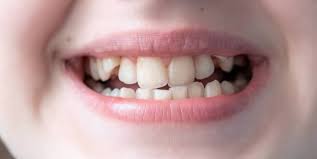If you're considering or already using clear aligners, you've likely wondered, “How often should I wear aligners for best results?” This is a vital question because aligner success depends heavily on consistent wear time. Unlike traditional braces, aligners are removable, which gives users flexibility—but that freedom comes with responsibility. To achieve optimal results, users must commit to the recommended wear time and handle their aligners correctly.
Clear aligners for Crooked Teeth Treatment In Dubai are becoming increasingly popular due to their discreet design and ease of use. Whether you're using them to correct mild spacing or more noticeable misalignments, the key to successful treatment lies in how long and consistently you wear them. Neglecting your wear schedule can lead to delays or even reversed progress. So, let’s dive into how you can ensure the best outcome with your aligners.
Importance of consistent aligner wear:
Understanding the importance of wearing your aligners consistently can make the difference between quick, effective progress and extended treatment times. People often ask, “Can I skip wearing aligners at night?” or “Is it okay to take aligners out during the day?” While these questions seem harmless, inconsistent wear can hinder your progress.
Why wear time matters:
- Aligners work by applying gentle, constant pressure on your teeth
- Inconsistent wear disrupts that pressure, delaying tooth movement
- Wearing them less than the recommended time can lead to discomfort and re-adjustments
- Each aligner set is designed to move your teeth slightly; timing is everything
For clear aligner therapy to be effective, users should aim to wear their aligners at least 20–22 hours per day. This leaves only a small window for eating, drinking (non-water), and oral hygiene.
Risks of not wearing aligners properly:
Skipping even a few hours a day can lead to setbacks. Many users mistakenly assume they can wear aligners only when convenient or visible. But failing to follow guidelines can create unnecessary risks.
Common risks of poor aligner compliance:
- Prolonged treatment duration due to inconsistent pressure
- Tooth relapse where teeth shift back to their original position
- Increased discomfort each time aligners are worn after a break
- Poor fit if new aligners don’t match your teeth’s position
If you’re wondering, “What happens if I wear aligners only at night?”, the answer is simple: you’ll slow down or completely derail your treatment. Aligners for teeth straightening work best when worn consistently, day and night.
Benefits of proper aligner wear:
Aligners offer many benefits, especially when worn correctly. Patients who stick to the wear-time recommendation typically experience faster and more predictable results. One of the major advantages of aligners is that the timeline is often shorter than traditional braces, but only if wear guidelines are followed.
Benefits of full-time aligner wear:
- Faster tooth movement and shorter treatment duration
- Better tracking—teeth move according to plan
- Minimal discomfort with gradual, consistent shifts
- Predictable results that match your original treatment timeline
In addition to physical changes, there’s also the benefit of improved oral hygiene. Since aligners are removable, you can brush and floss with ease—unlike metal braces, which require special tools. Just remember that clear aligners for Crooked Teeth Treatment only work as intended when worn diligently.
Frequently asked questions about aligner wear:
Can I take out aligners for special occasions?
Yes, but sparingly. It’s okay to remove aligners for weddings, photos, or short events—but remember to keep those moments brief and reinsert your aligners promptly.
What if I forget to wear my aligners one night?
Missing one night won’t ruin your treatment, but make it a rare exception. If you forget, wear them extra diligently the next day and don’t skip again.
How do I know if I’m wearing them enough?
A tight or painful feeling when putting them back in could mean you haven’t been wearing them enough. Your aligners should fit snugly and comfortably if worn properly.
Do I wear aligners while sleeping?
Absolutely. Nighttime wear is crucial, as teeth are still shifting. Aligners should be worn during sleep to maintain consistent pressure.
Can I eat with aligners in?
No. You must remove aligners when eating or drinking anything other than water. Eating with them in can damage them or cause staining.
Conclusion:
To get the most out of your clear aligner treatment, the answer to “How often should I wear aligners for best results?” is clear—at least 20 to 22 hours per day. Consistent wear, combined with good oral hygiene and proper handling, is the foundation of a successful outcome. Aligners offer flexibility, but they require commitment. If you’re serious about correcting crooked teeth, wearing your aligners as instructed will help you reach your smile goals faster, safer, and more effectively.
Wearing aligners for the recommended hours daily is non-negotiable if you're aiming for timely and lasting results. When used correctly, clear aligners for crooked teeth provide a nearly invisible, comfortable, and effective way to transform your smile—just stay committed to the schedule and watch the changes unfold.

